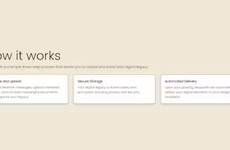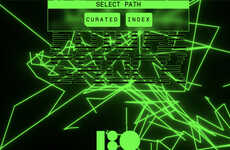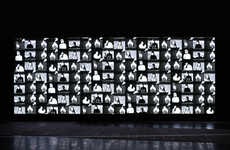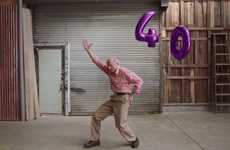
The LIFELOGGING Exhibit Explores Online Presence After Death
Meghan Young — May 6, 2015 — Lifestyle
References: dublin.sciencegallery & psfk
Living on after death is much easier these days thanks to the slew of online profiles pulsating on the Internet; yet the LIFELOGGING exhibit addresses this concept of a digital life (or even death) in a more exploratory way. It bridges the gap between the physical world and the digital one in very interesting ways.
For instance, a LIFELOGGING piece by artist and art director Karl Toomey involved "a tombstone with the data-fiable accomplishments of fictitious character @kurtmarkoneill carved into it," describes Psfk. Toomey elaborates on his feelings about a digital afterlife, "Likewise on an emotional level I’d like my family to be able to put my data to use somehow. Maybe deleting it could be the ultimate closure for them. Or maybe replaying the data could be comforting in the way old photos are."
For instance, a LIFELOGGING piece by artist and art director Karl Toomey involved "a tombstone with the data-fiable accomplishments of fictitious character @kurtmarkoneill carved into it," describes Psfk. Toomey elaborates on his feelings about a digital afterlife, "Likewise on an emotional level I’d like my family to be able to put my data to use somehow. Maybe deleting it could be the ultimate closure for them. Or maybe replaying the data could be comforting in the way old photos are."
Trend Themes
1. Digital Afterlife - Exploring the concept of a digital life after death, this trend presents opportunities for creating virtual memorials, digital legacies, and personalized AI avatars.
2. Lifelogging - The trend of lifelogging enables individuals to capture and store their personal experiences digitally, prompting opportunities to develop innovative platforms for preserving and managing these digital memories.
3. Data Utilization - With the increasing amount of personal data generated, there exists an opportunity to create meaningful applications and services that help families and loved ones utilize this data for closure, remembrance, or emotional comfort.
Industry Implications
1. Augmented Reality - By blending physical and digital worlds, the augmented reality industry can create immersive experiences and virtual memorials that allow people to interact with the digital lives of their loved ones after they pass away.
2. Artificial Intelligence - The artificial intelligence industry has the potential to develop personalized AI avatars that can simulate the personalities and behaviors of deceased individuals, providing a way for families to maintain a connection with their loved ones digitally.
3. Data Management - The data management industry can provide innovative solutions for organizing, preserving, and analyzing personal data, allowing families to access and utilize the digital legacies of their deceased family members.
4.5
Score
Popularity
Activity
Freshness























